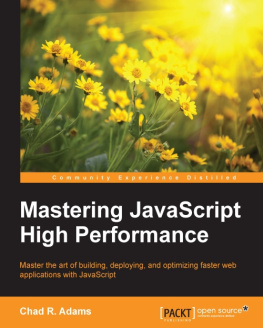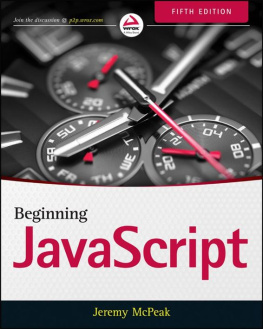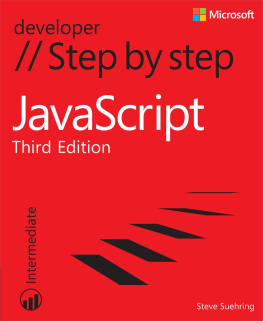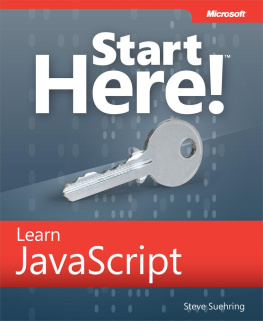In order to encompass the many subjects and topics reflective of JavaScript in use today, we had to start with one premise: this is not a book for a JavaScript newbie. There are so many good books and tutorials for those new to JavaScript that we felt comfortable setting the bar a little higher than the first edition of the JavaScript Cookbook .
If youve been playing around with JavaScript for several months, maybe tried your hand with a little Node or Ajax development, you should be comfortable with the book material. Some of the subjects might be challenging, but in a good way.
Book Architecture or Why Is This Book Organized in This Way?
I originally had this idea of a large graphic diagramming the world of JavaScript, which I would split into fragments, which I would then use to introduce each chapter. It didnt take long for me to realize that no component of JavaScript exists in isolation from the others. If anything, JavaScript is one big Venn diagram, with dozens of intersectionsmore of a spirograph than distinct, connected bubbles. So much for grand visualizations. Instead, I split the book into 18 loosely defined chapters, with overlap handled by cross references.
The book is split into two parts labeled Classic JavaScript and JavaScript, All Blown Up .
The classic parts of JavaScript are the solid foundations of the language weve had for the last decade, and arent going away. But they arent standing still, either. We have our friends String, Number, Boolean, Array, Function, and Object, but thanks to ECMAScript 5 and 6, theres a lot more we can do with these objects. In addition, before we can get into the more leading-edge, complex uses of JavaScript, we still need to understand how to use Ajax, work with JSON, create and use libraries, as well as incorporate one of the more popular (jQuery) into our applications. We also need to understand how to work within the browser, which is still the working environment for most JavaScript development, as well as test our creations and make sure theyre accessible.
Now that video and audio, as well as the Canvas element and SVG, are supported in all modern browsers, a basic understanding of these rich media elements is fundamental.
The All Blown Up part of JavaScript is basically everything else. This includes the new objects introduced in ECMAScript 6, JavaScript in the server (Node), complex frameworks (in the server and client), and modular JavaScript. It also includes JavaScript in mobile devices, data visualizatons, graphical tools available in the server, bidirectional client-server communication, and the rich world of available APIs, libraries, and modules.
It seems a bewildering mess at times, but the more examples you try in the different environments, the more you realize that JavaScript is the key that makes it all come together.
A break down of the chapters follows in the next sections.
Part I, Classic JavaScript
focuses on traditional uses of JavaScript as theyve been practiced the last several years, but updated to incorporate new ideas, modifications, and improved functionality:
Covering use of some familiar old friends: String, Number, Boolean, RegExp, Math, and Date. The coverage goes beyond the basic, and also touches on some of the new extensions that come to us via ECMAScript 5 and 6.Probably no component of JavaScript, the language, has changed more than the simple, essential Array. This chapter goes beyond basic Array use, and covers some of the newer functionality.The ubiquitous Functionwhat would we do without it? In JavaScript, very little. This chapter covers some of the more advanced function uses, and introduces more modern functional uses. Well look at the three basic function construction types, as well as the extremely useful IIFE (Immediately Invoked Function Expression).Following closely on the heels of the Array in undergoing change, both in perception and use, the JavaScript Object is nothing if not malleable, hence the chapter title. Most of the chapter focuses on this malleability, both the good uses and the not as good. I also briefly touch on the increasing popularity of functional programming versus object-oriented.You cant escape the DOM, the DOM knows all (nless its Shadow DOM, covered in ). Its a whole lot more fun to work with the DOM nowadays, thanks to new querying capabilitiy. And though most folks use jQuery, its still important to understand whats happening beneath the surface of this and other popular libraries.No matter how new JavaScript is, there are still JavaScript best practices to follow, such as keeping our code clean, testing, and ensuring accessibility. We now have new tools to make these necessary tasks a little easier, and a little more entertaining.Here well look at the basics of library creation, including minification, hosting your library in GitHub or CDN, using external libraries (jQuery and Underscore), and converting your library to a jQuery plug-in. Well take jQuery for a spin, but not all libraries do all thingswell also take a look at libraries that focus on one single type of task. Once we have the basics of library building under our belt, we can continue with modularizing our code, in .You cant play with the new communication techniques (e.g. WebSockets) without a good understanding of Ajax, as well as how to work with JSON and XML. Yes, XML still does exist. Understanding the technology covered in this chapter is necessary before working with the newer client-server communication covered in .This chapter provides basic usage techniques for the Canvas element and 2D graphics, SVG, and the audio and video elements. It also touches on combining the media types (integrating SVG and Canvas) and altering videos as they run. Data visualizations, more escoteric graphical tools, and server-side graphics are covered in .

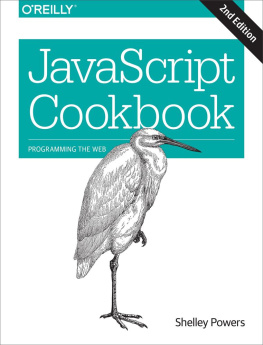
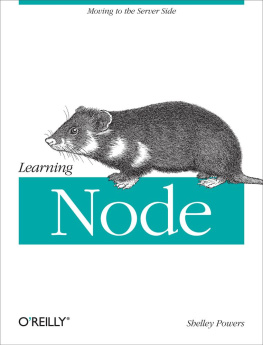
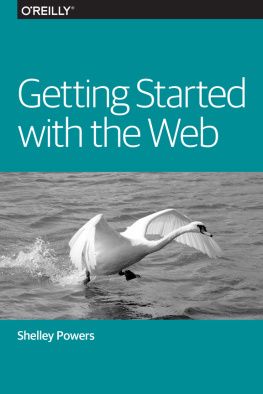
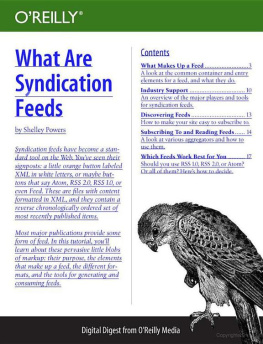

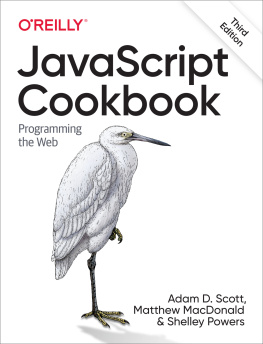
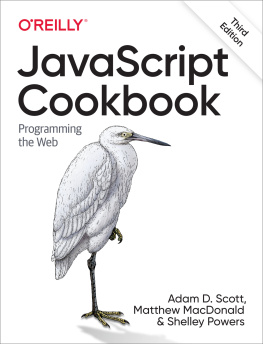
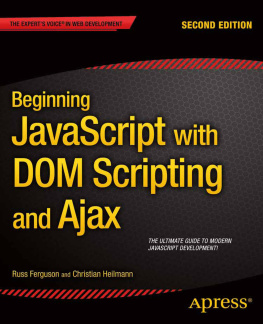
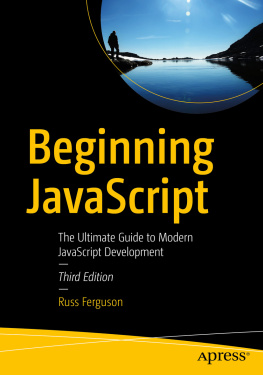
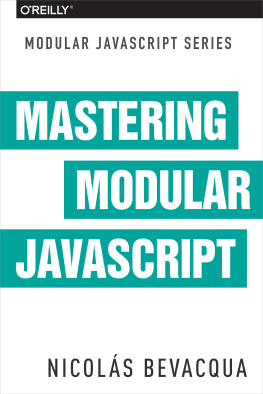
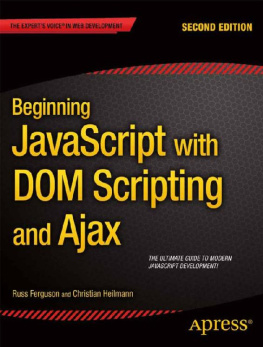
![Shelley Powers [Shelley Powers] - Learning JavaScript, 2nd Edition](/uploads/posts/book/120570/thumbs/shelley-powers-shelley-powers-learning.jpg)
